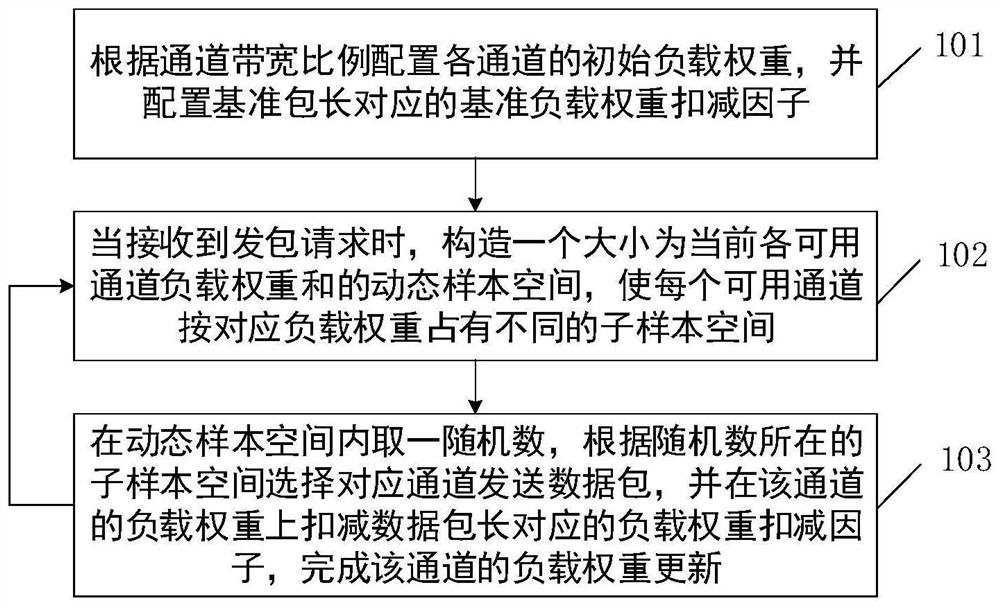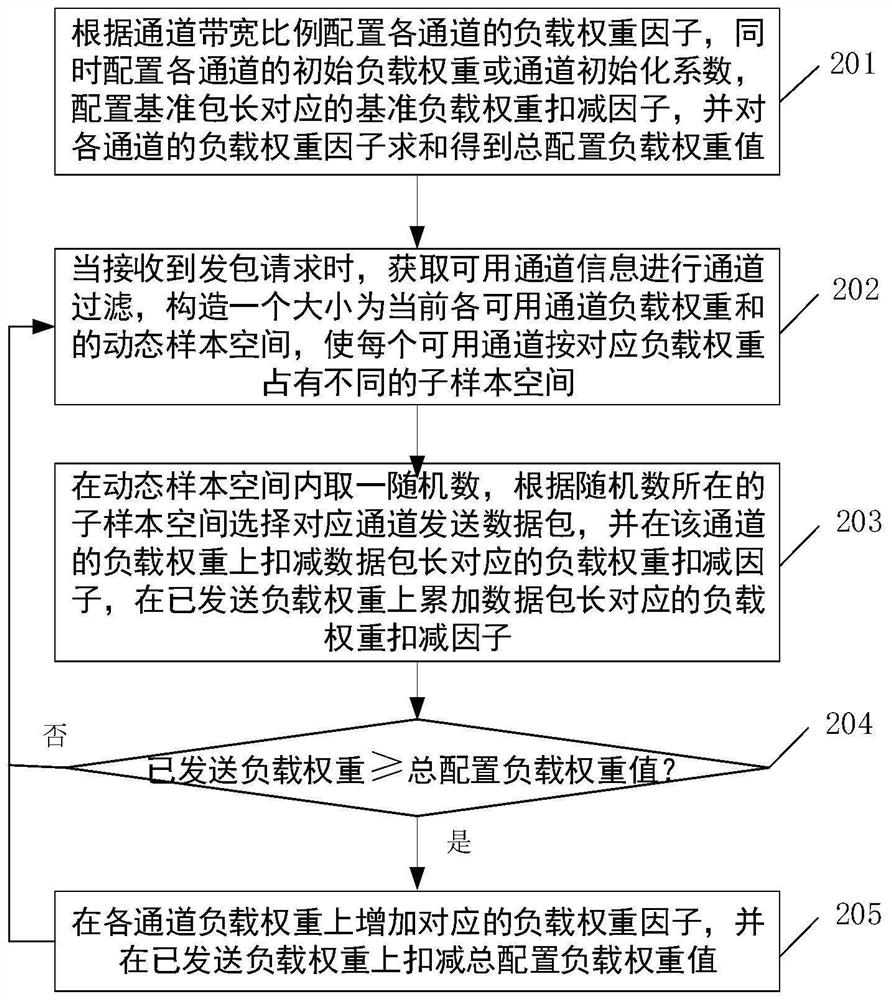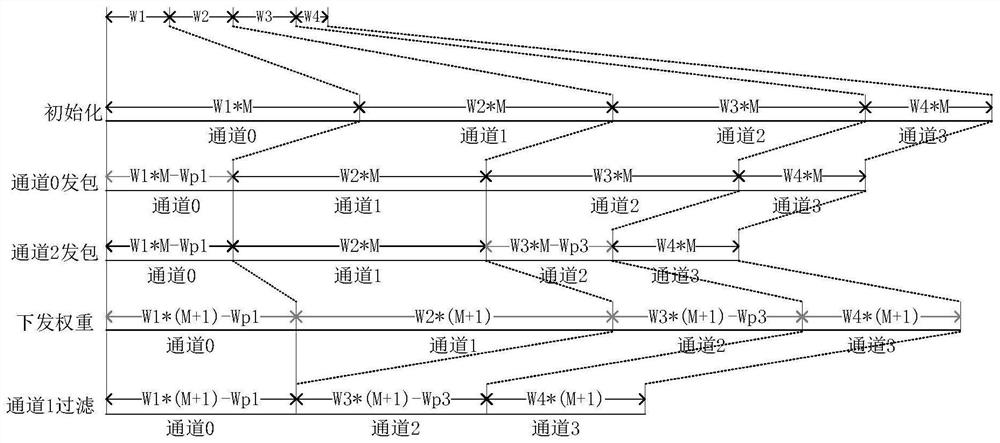Load balancing method and device based on multi-channel protocol
A load balancing and multi-channel technology, applied in digital transmission systems, electrical components, transmission systems, etc., can solve problems such as inability to effectively solve load balancing of multiple bandwidth channels, inability to adjust the load ratio between channels, and unsatisfactory load balancing effects , to achieve a good load balancing effect
- Summary
- Abstract
- Description
- Claims
- Application Information
AI Technical Summary
Problems solved by technology
Method used
Image
Examples
Embodiment 1
[0041]In order to solve the technical problem that the traditional method can only achieve the same packet length data packets, the same bandwidth channel, all channels available scenarios and load balancing under the scenario of unchanged available channels, the embodiment of the present invention provides a load balancing method based on multi-channel protocol ,like figure 1 As shown, it mainly includes the following steps:
[0042] Step 101, configure the initial load weight of each channel according to the channel bandwidth ratio, and configure the base load weight deduction factor corresponding to the base packet length.
[0043] Assuming that n represents the total number of channels, and W0i represents the load weight of any i-th channel, i∈[1, N], then the load weights W01, W02, ..., W0n of n channels need to be configured according to the channel bandwidth ratio The initial value of , that is, the initial load weight. In an optional embodiment, Wi represents the loa...
Embodiment 2
[0056] On the basis of the above-mentioned embodiment 1, the embodiment of the present invention further optimizes the load balancing method from two aspects: one is to count the amount of data sent each time after the selected channel sends data packets, and whenever the amount of data sent exceeds a certain When the preset threshold value is reached, the authorization is issued again, that is, the load weight of each channel is reconfigured, so as to maintain the basic stability of the total authorization. The second is to implement overflow protection for the load weight of each channel, that is, after each update of the load weight of the channel, if the load weight of a certain channel is too high or too low, the weight overflow protection will be triggered; specifically, if the load weight of the channel is in After the update is higher than the upper threshold of weight overflow, the channel weight overflow protection is triggered, and the load weight of the channel is s...
Embodiment 3
[0070] In the embodiment of the present invention, the total number of channels is N=4, and the channel initialization coefficient M is initially configured instead of the initial load weight of each channel as an example. The interval ranges of the dynamic sample space S and each sub-sample space Si are left closed and right open. form, combine image 3 Further specific description of the load balancing method in Embodiment 1 and Embodiment 2:
[0071] 1) Initialization:
[0072] Configure the load weight factors W1, W2, W3, and W4 of each channel according to the channel bandwidth ratio, configure the channel initialization coefficient M at the same time, and configure the base load weight deduction factor Wp0 corresponding to the base packet length. The initial load weights of each channel are respectively: W01=W1*M, W02=W2*M, W03=W3*M, W04=W4*M, and the total configured load weight value Wsum=W1+W2+W3+W4.
[0073] 2) Channel 0 sends packets:
[0074] When a packet sendi...
PUM
 Login to View More
Login to View More Abstract
Description
Claims
Application Information
 Login to View More
Login to View More - R&D
- Intellectual Property
- Life Sciences
- Materials
- Tech Scout
- Unparalleled Data Quality
- Higher Quality Content
- 60% Fewer Hallucinations
Browse by: Latest US Patents, China's latest patents, Technical Efficacy Thesaurus, Application Domain, Technology Topic, Popular Technical Reports.
© 2025 PatSnap. All rights reserved.Legal|Privacy policy|Modern Slavery Act Transparency Statement|Sitemap|About US| Contact US: help@patsnap.com



